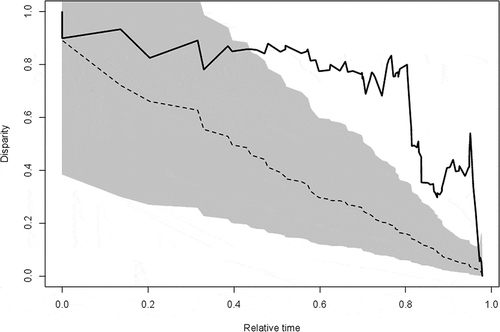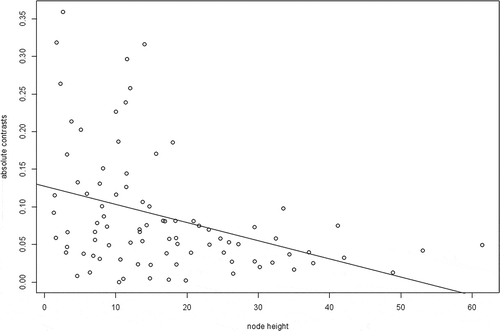Figures & data
Table I. List of sparid species included in this study with data on total length (TL, in cm), habitat type (demersal, reef, benthopelagic), diet (durophagous, non-durophagous), trophic level expressed on the basis of the TROPH index (TROPH index > 4.2: TPs = TP; TROPH index 3.8–4.2: MPs = MP; TROPH index 2.8–3.8: low-predators = LP; TROPH index 2.2–2.8: omnivores = OM; TROPH index < 2.2: herbivore = HE), and biogeographic region. For species found in multiple geographic areas, the area that represents the largest component of their range is indicated in bold. IWP, Indo-West Pacific; WIO, Western Indian Ocean; SAUST, Southern Australia; WATL, Western Atlantic; SAFR, South Africa; EATL + MED, North Eastern Atlantic + Mediterranean; EPAC, Eastern Pacific; WAFR, Western Africa and Central Atlantic.
Figure 1. Maximum likelihood phylogenetic hypothesis inferred with RAxML (Randomized Accelerated Maximum Likelihood). Black circles indicate bootstrap proportion (BSP) over 80%; grey circles indicate BSP between 50 and 80%; white circles indicate BSP smaller than 50%.
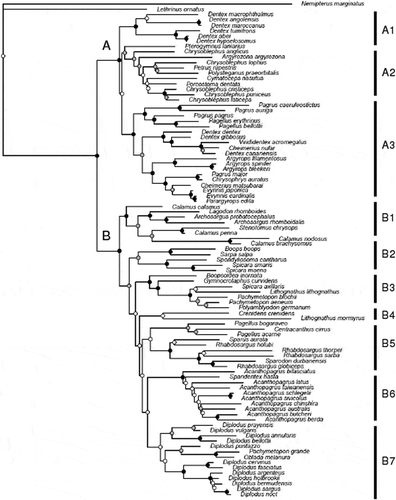
Figure 2. BEAST chronogram of sparids. Blue bars indicate 95% HPD (highest posterior density); numbered black circles indicate fossil calibration points (see Appendix 1). Fish images modified under Creative Commons license from original photographs by J. E. Randall, A.S. Thorke Østergaard and J.-L. Justine (retrieved from www.fishbase.org).
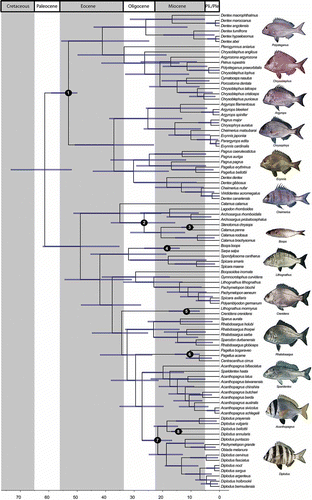
Figure 3. Maximum likelihood reconstruction of ancestral body size on nodes of sparid tree. Circle size proportional to natural log of total length; body size data obtained from www.fishbase.org.
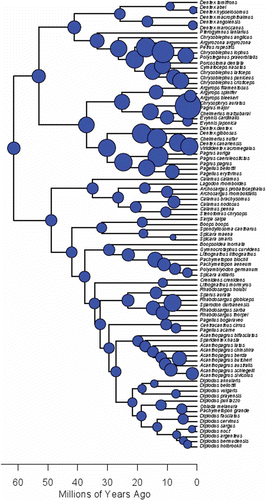
Figure 4. Mean subclade disparity through time (DTT) for sparid body size (lower solid line). Upper dashed line indicates the median subclade DTT based on 10,000 simulations of character evolution on the phylogeny under Brownian motion. The grey shaded area indicates the 95% DTT range for the simulated data.
